Lemon Garlic Salmon (3 Ways)
If your weeknight dinner game needs a major upgrade—without adding extra stress—this Lemon Garlic Salmon recipe is for you! Tender, flaky salmon meets the irresistible combo of butter, garlic, lemon, and fresh herbs. Plus, cook it your favorite way: in the oven, air fryer, or on the grill.
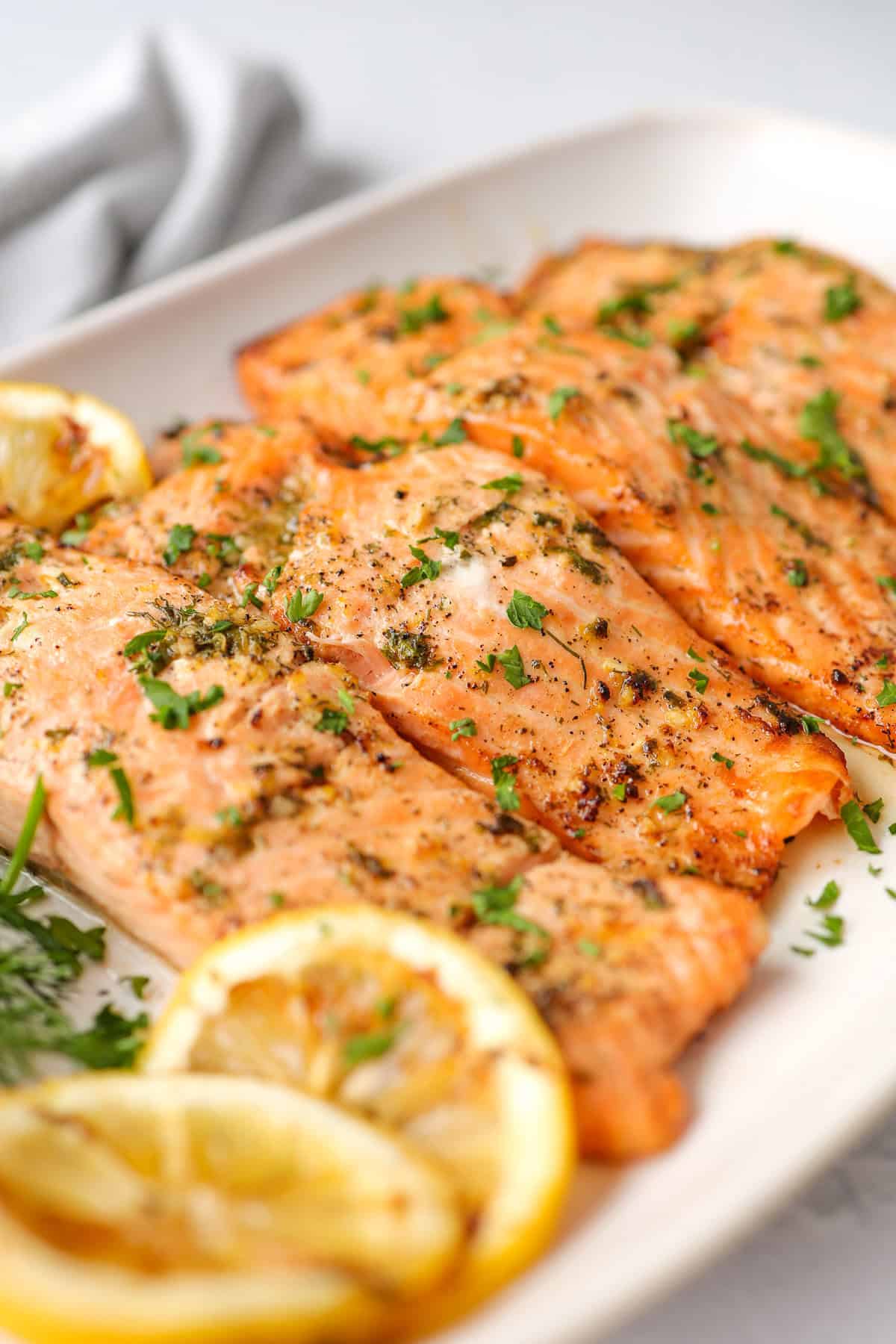
Why We Love This Recipe
- Ready in 30 minutes or less, making it great for weeknights.
- Uses fresh, wholesome, flavor-packed ingredients.
- Choose your cooking method–oven, air fryer, or grill!
- Pairs well with just about any veggies and grains.
Another similar one is our Broiled Parmesan Tilapia that I’ve been making for my family for 15 years. It’s super fast and delicious as well.
Ingredients
Grab these simple, fresh ingredients for your Lemon Garlic Salmon…
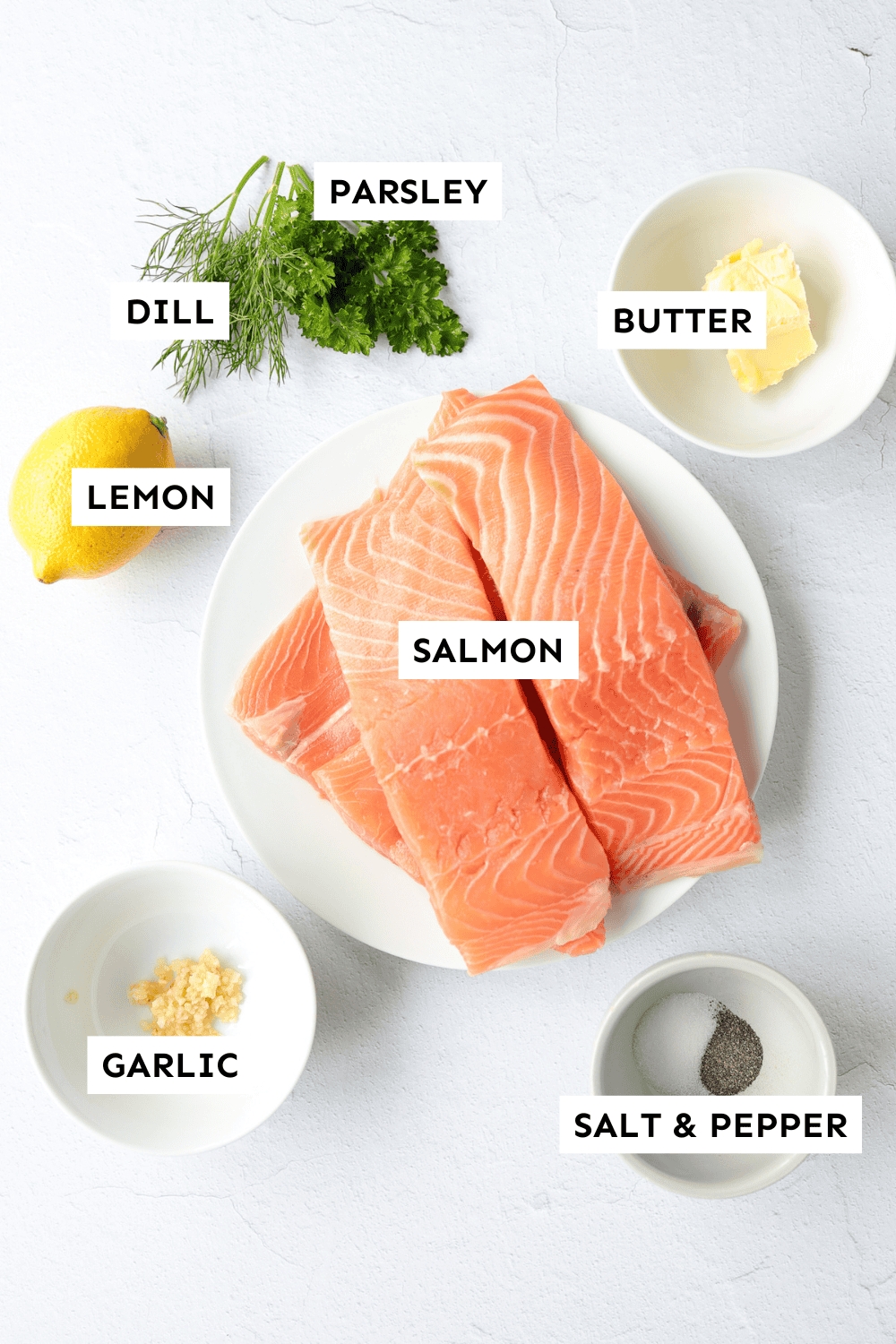
Ingredient Notes
- Salmon: Skin-on fillets are great for grilling or baking because the skin helps hold everything together and keeps moisture in. You can remove it after cooking if you prefer.
- Butter: If you need a dairy-free option, olive oil works well, too.
- Garlic: Fresh garlic is ideal for that punchy flavor, but pre-minced garlic or even garlic powder can work in a pinch.
- Fresh Herbs: These brighten up the dish and add fresh flavor. Dill pairs especially well with salmon, but parsley is a great all-purpose herb.
- Lemon (zest + juice + wedges for serving): The acid in lemon juice balances out the richness of the fish and butter, while the zest gives it a burst of citrus aroma. Always zest before juicing!
How to Make Lemon Garlic Salmon
Here’s an overview of how to make this recipe, but you can find the full printable version in the recipe card below.
Make Marinade
Combine melted butter, garlic cloves, salt, pepper, fresh herbs, lemon zest, and juice of half lemon. Cut the other half into 4 wedges and set aside for serving.
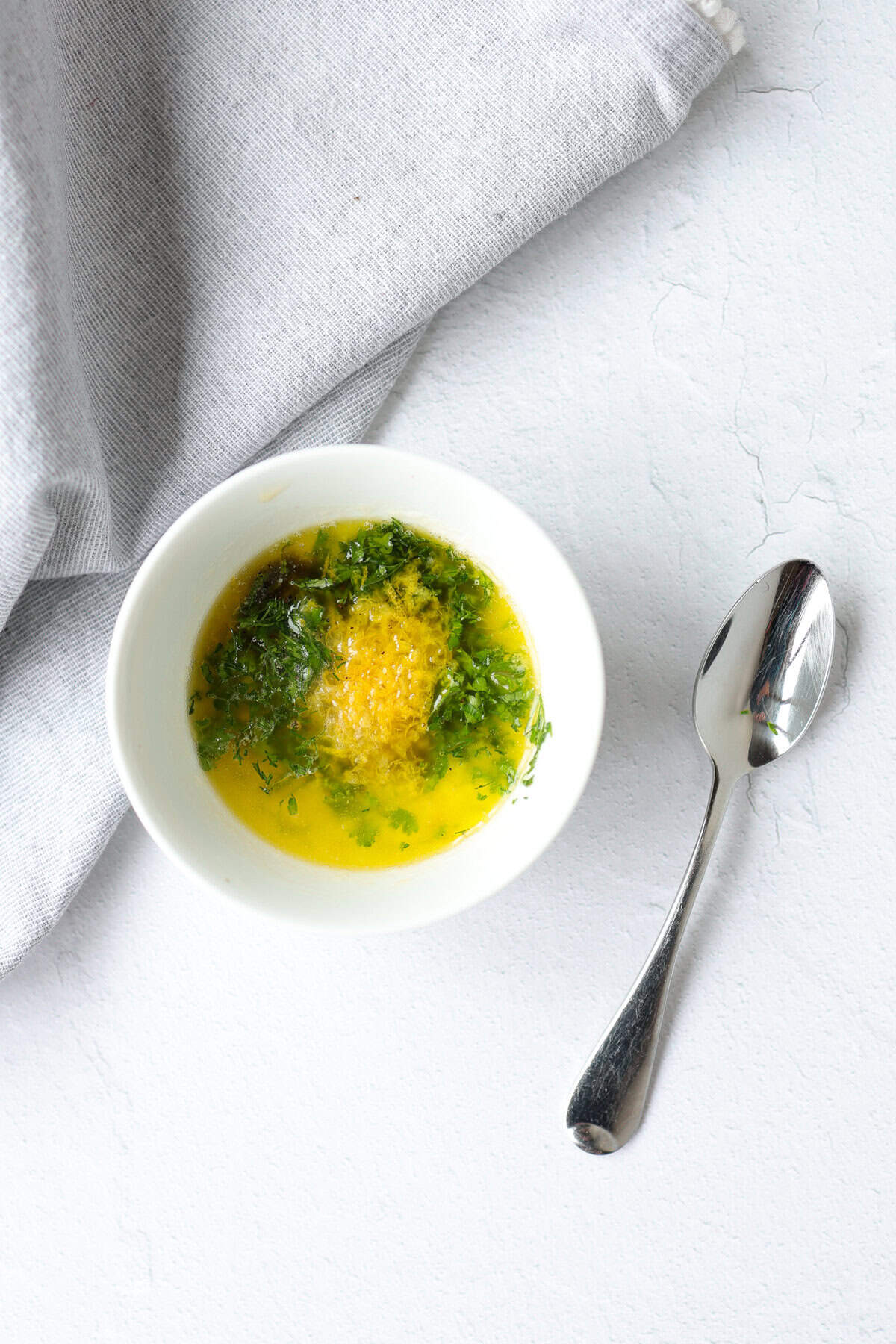
Prep Salmon
Place the salmon skin side down on a lined sheet pan. Pat them dry. Brush or spoon the marinade on top of each one generously and let it sit to marinate while you preheat your oven, air fryer, or grill. (Tip: Use any extra marinade on roasted asparagus or roasted broccoli.)
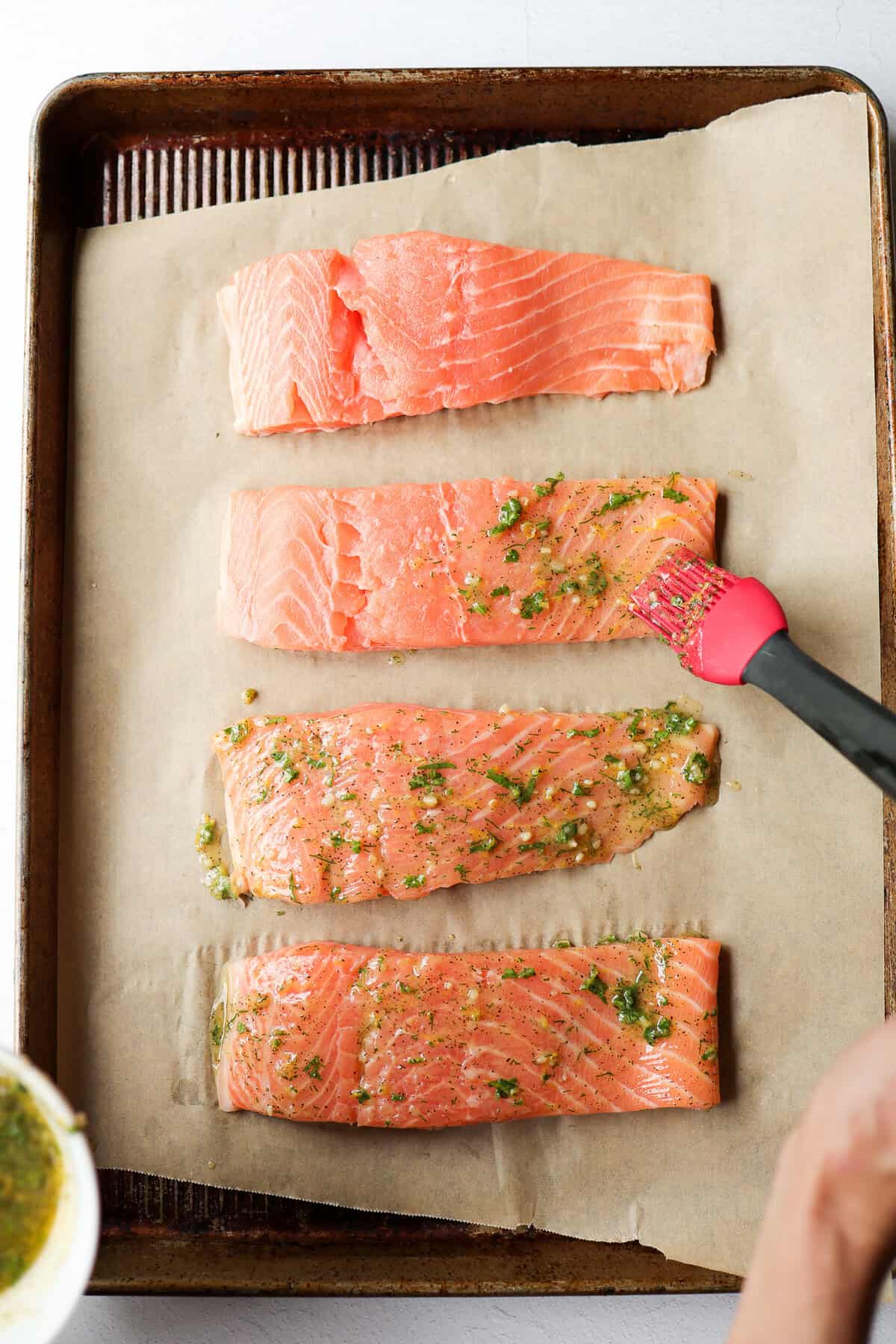
Cook
Cook the salmon filets using one of these methods, until internal temp reaches 125–130°F or until the thickest part flakes easily and is slightly translucent (see Cooking Notes):
- Oven: Preheat the oven to 400°F. Bake for 12-15 minutes.
- Air Fryer: Preheat the air fryer to 400°F. Spray the basket with cooking spray and place salmon skin-side down in a single layer, leaving a little space between them. Air fry for 5-7 minutes for thinner filets and 8-10 minutes for thicker filets (always start on the lower end and add more time as needed). No need to flip.
- Grill: Preheat grill to medium-high heat (400 degrees). Clean and grease the grates. Place fillets skin-side down on the grill. Close the lid and grill for 5-7 minutes without flipping. The salmon will naturally release from the grill when it’s ready to flip. Use a thin metal spatula to gently lift and flip. Grill another 2–3 minutes.
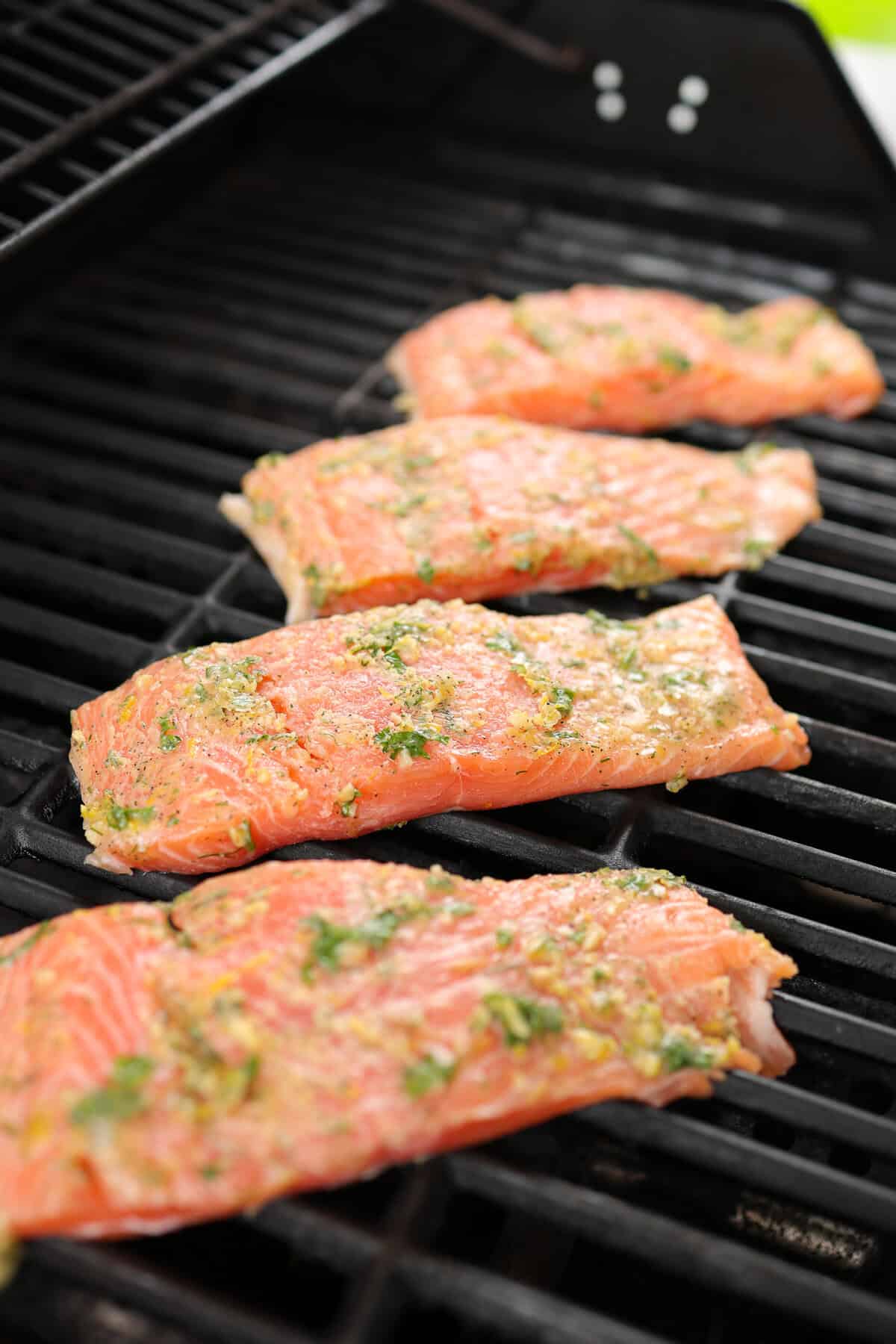
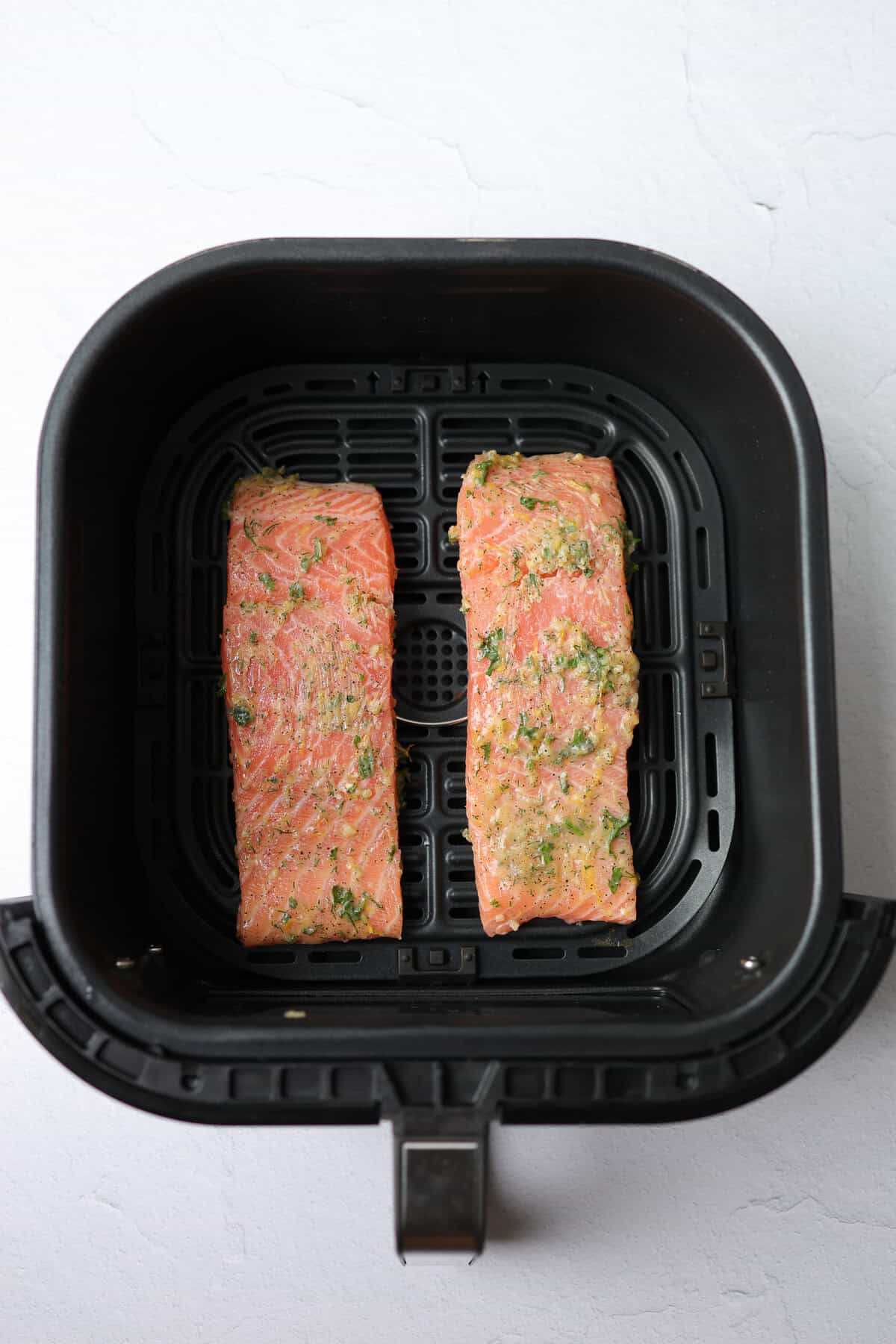
How to Know When Salmon is Done:
- Internal Temp: Salmon is done at 125°F–130°F in the thickest part for best results. (USDA says 145°F, but salmon continues to cook while it rests, so its better to take it off earlier.)
- Flake Test: Use a fork to gently press into the thickest part of the salmon. It’s done if it flakes easily.
- Color Change: Raw salmon is translucent and usually deep pink. As it cooks, it turns opaque pink so keep an eye on the thickest part to make that color change.
- Texture: When pressing with your finger it should feel firm but still give a little to be done. If it’s super firm and dry-looking—it’s overcooked.
Rest & Serve
Transfer salmon to a serving platter, cover with foil, and let it rest for 2–3 minutes (to finish cooking!). Serve warm with a squeeze of fresh lemon juice, perhaps more fresh herbs, and salt and pepper to taste.
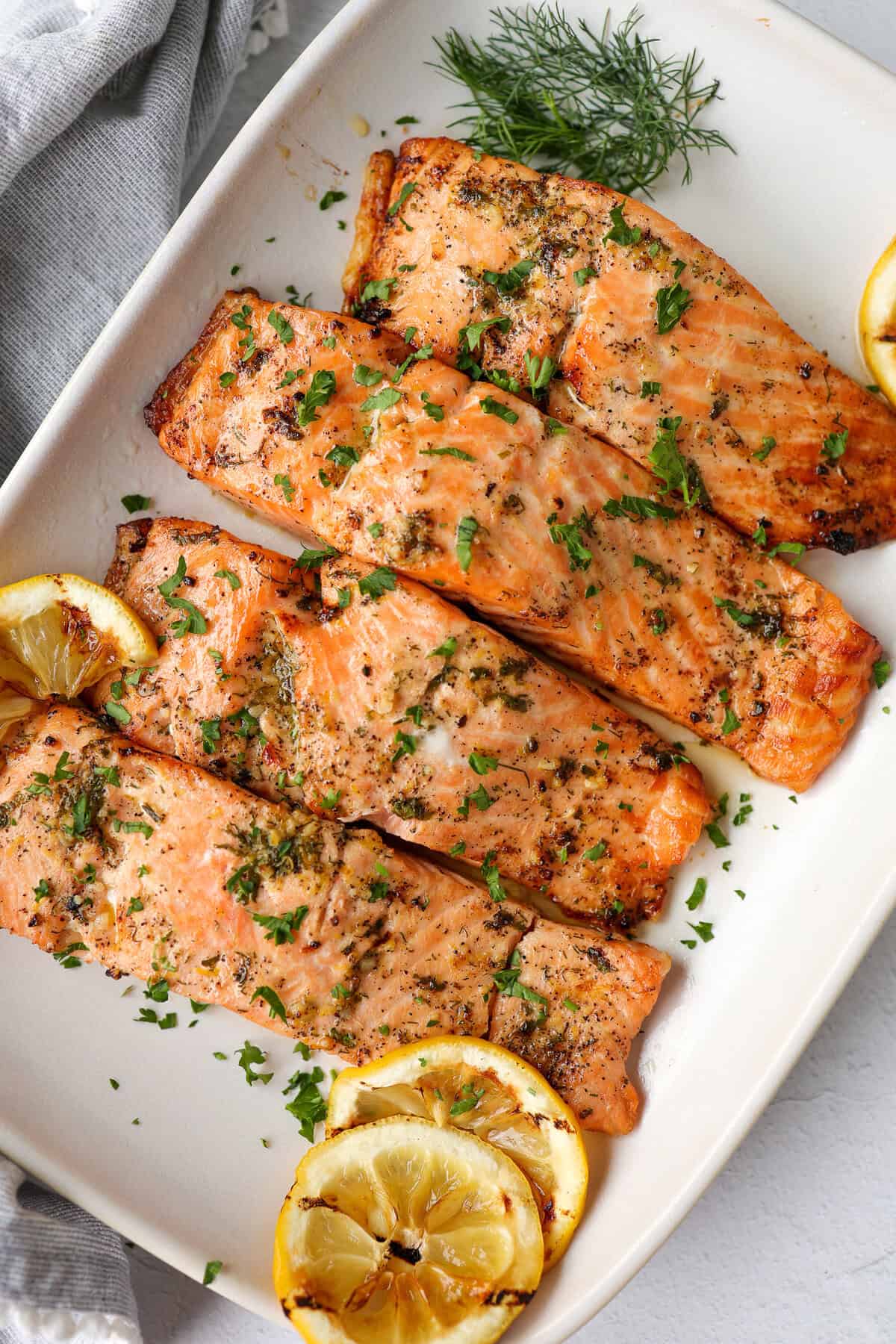
FAQs about Lemon Garlic Salmon
Yes! Just thaw it overnight in the fridge first, then pat dry before using.
Wild-caught sockeye or coho have great flavor and texture. Farm-raised Atlantic is more budget-friendly and still works well in this recipe.
You can! Use about 1 teaspoon total of dried herbs if you don’t have fresh—just know the flavor won’t be quite as vibrant.
The white stuff that appears on the top of salmon after cooking it for a while is called albumin (a protein that’s safe to eat but doesn’t look so appetizing). It typically oozes out at a temperature of 135°F or higher when it’s overcooked. So that’s why we suggest removing the salmon before it reaches that temperature.
– Undercook slightly, then rest: Salmon continues cooking a bit after you pull it off the heat so pull it off when it is at 125°F and let it rest a couple minutes.
– Cook skin-side down: This helps keeps moisture in.
– Use even thickness: If the filet is thick on one end and thin on the other, fold the thin end under to even out cooking time.
Side Dish Ideas:
Since this salmon meal comes together quickly, pair it with one of these fast side dishes.
- Roasted or Grilled Asparagus – You can do this at the same time and temp in the oven or grill.
- Lemon Feta Orzo
- Air Fryer Sweet Potatoes
- Instant Pot Brown Rice
- Creamy Lemon Pasta
How to Video
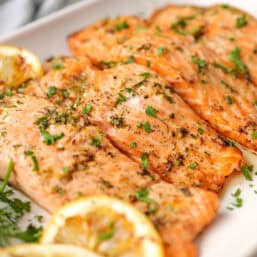
Lemon Garlic Salmon (3 Ways)
Ingredients
- 2 tablespoons salted butter (sub: olive oil)
- 2 cloves garlic (minced; sub: 1 teaspoon pre-minced garlic)
- 3/4 teaspoon salt (plus more to taste)
- 1/2 teaspoon black pepper (plus more to taste)
- 1 tablespoon fresh dill (finely chopped; plus more serving; sub: chopped fresh parsley)
- 1 lemon
- 4 salmon fillets (about 6 ounces each; skin-on or skinless)
Instructions
- Make Marinade: Place the butter in a small microwave-safe bowl and microwave in 10 second increments until melted. Add in the garlic cloves, salt, pepper, and fresh herbs. Zest the lemon using a microplane grater into the bowl (about 1 teaspoon). Cut the lemon in half. Squeeze the juice of one half into the bowl (about 1 tablespoon juice), straining out any seeds. Cut the other half into 4 wedges and set aside for serving. Stir the marinade together until well combined.
- Prep Salmon: Place the salmon skin side down on a lined sheet pan (or any dish/plate will work if you’re air frying or grilling). Pat them dry. Brush or spoon the marinade on top of each one generously and let it sit to marinate while you preheat your oven, air fryer, or grill. (Tip: Use any extra marinade on roasted asparagus or roasted broccoli.)
- Cook: Cook the salmon fillets using one of these methods, until internal temp reaches 125–130°F or until the thickest part flakes easily and is slightly translucent (see Cooking Notes):– Oven: Preheat the oven to 400°F. Bake for 12-15 minutes.– Air Fryer: Preheat the air fryer to 400°F. Spray the basket with cooking spray and place salmon skin-side down in a single layer, leaving a little space between them. Air fry for 5-7 minutes for thinner fillets and 8-10 minutes for thicker fillets (always start on the lower end and add more time as needed). No need to flip.– Grill: Preheat grill to medium-high heat (400°F). Clean and grease the grates. Place fillets skin-side down on the grill. Close the lid and grill for 5-7 minutes without flipping. The salmon will naturally release from the grill when it’s ready to flip. Use a thin metal spatula to gently lift and flip. Grill another 2–3 minutes.
- Rest & Serve: Transfer salmon to a serving platter, cover with foil, and let it rest for 2–3 minutes (to finish cooking!). Serve warm with a squeeze of fresh lemon juice, perhaps more fresh herbs, and salt and pepper to taste.
Notes/Tips
- Internal Temp: Salmon is done at 125°F–130°F in the thickest part for best results. (USDA says 145°F, but salmon continues to cook while it rests, so its better to take it off earlier.)
- Flake Test: Use a fork to gently press into the thickest part of the salmon. It’s done if it flakes easily.
- Color Change: Raw salmon is translucent and usually deep pink. As it cooks, it turns opaque pink so keep an eye on the thickest part to make that color change.
- Texture: When pressing with your finger it should feel firm but still give a little to be done. If it’s super firm and dry-looking—it’s overcooked.
- Undercook slightly, then rest: Salmon continues cooking a bit after you pull it off the heat so pull it off when it is at 125°F and let it rest a couple minutes.
- Cook skin-side down: This helps keeps moisture in.
- Use even thickness: If the filet is thick on one end and thin on the other, fold the thin end under to even out cooking time.
Nutrition
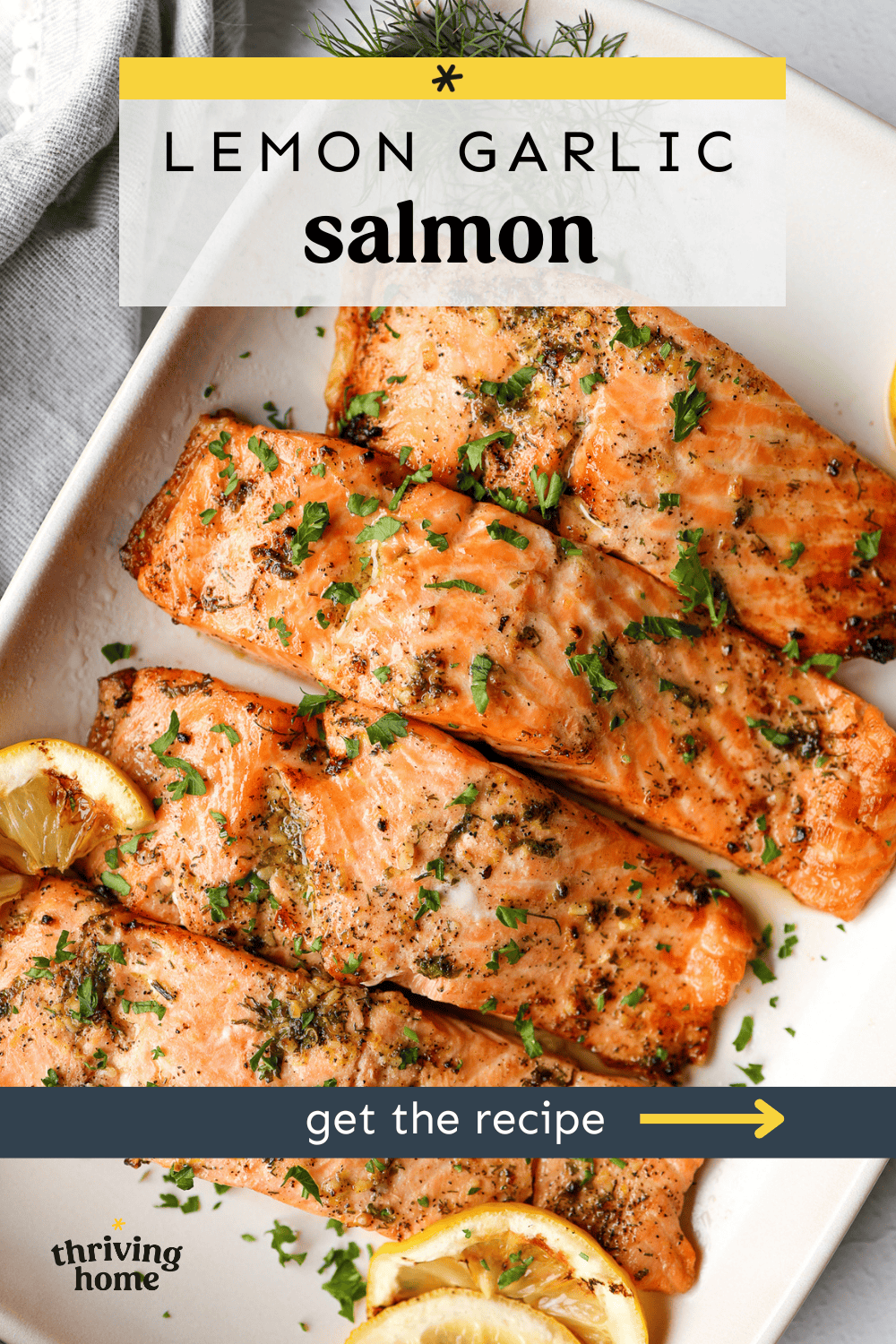
We made in the air fryer tonight – excellent! Appreciate the spot on cooking instructions including temp to reach so not overcooked.
Wonderful! So glad you enjoyed this recipe Amy. Thanks for leaving a review.